The state of Syria’s air defense and the prospects for its enhancement with the C-300 anti-aircraft missile system
In order to understand what the Syrian air defense forces currently represent and how they are able to counter modern air attack weapons, let us go back to the past. The formation of a centralized air defense system in the Syrian armed forces began in the 60s, during the period of active confrontation between the Arab countries and Israel. At that time, a number of Middle Eastern states, such as Syria, Egypt and Iraq, received massive economic and military assistance from the Soviet Union. In parallel with the supply of small arms, artillery systems and tanks the most modern jet fighter planes, anti-aircraft guns with radar guidance, anti-aircraft missile systems and airborne control radars were sent to the Arab countries at that time. Since the Arab air defense calculations were not highly qualified, Soviet military advisers were always next to them, and often the anti-aircraft missile battalions covering the most important facilities were fully equipped with Soviet troops.
But we must pay tribute to the Syrians, from all the armies of the Arab coalition they turned out to be the most persistent soldiers, and after training in the Soviet training centers, the Syrian air defense calculations showed a good level of training. The Syrian air defense system, built on Soviet patterns, was constantly subjected to pressure from the Israeli Air Force. I must say that this confrontation came with varying success. As you know, in 1973, during the Doomsday War, the ground forces of the Arab coalition, despite the surprise of the attack and the initial success of the operation, were ineptly lost to the Israelis. At the same time, the Syrian air defense forces worked perfectly. The “Square” medium-range mobile air defense systems proved to be especially effective, which became an extremely unpleasant surprise for Israeli pilots. In Israel, like the United States, where the supplies were mainly from aviation equipment and weapons, at that time there were no active jamming stations capable of counteracting the Kvadrat mobile anti-aircraft missile system, which is an export modification of the Cube air defense system. Although the Arab armies were defeated in 1973, Israeli aircraft suffered heavy casualties in this conflict. According to various sources, from 18 to 100 Israeli combat aircraft were shot down in 120 days of active hostilities, another approximately two dozen heavily damaged fighters and attack aircraft were written off as unsuitable for recovery after returning to their airfields.
However, the Israelis quickly reached the appropriate conclusions and took appropriate measures. In June 1982, during Operation Medvedk 19, the Israel Defense Forces managed to defeat the Syrian air defense force deployed in Lebanon, which included the 24 anti-aircraft missile division: C-75, C-125 and Kvadrat. At the same time, the Israelis widely used the Scout and Mastiff UAVs, which conducted reconnaissance and observation of Syrian airfields, air defense system positions, revealed the location of radar posts and command and control points, and acted as false targets. The American-made anti-radar missiles AGM-45 Shrike and AGM-78 Standard ARM were widely used to defeat the radar review of the air situation and guidance stations for anti-aircraft missiles, and those air defense systems that could not be destroyed were suppressed by active interference. Israeli EW facilities were also able to disrupt the work of the radio networks that were under the control and coordination of the combat operations of the Syrian air defense. The Syrian anti-aircraft missile divisions, which are in range, have been heavily bombarded by Israeli artillery. After that, about a hundred fighter-bombers struck against anti-aircraft gun positions and radar posts. Already in the first two hours of the operation, the Israelis were able to destroy the 15 Syrian air defense system, which predetermined the further course of the hostilities.
After the defeat in June 1982, the Syrian air defense forces were strengthened by new supplies of equipment and weapons from the USSR. In particular, four C-200 long-range air defense systems went to Syria. At the first stage, after the deployment of “two hundred” in the Syrian Arab Republic, they were managed and serviced by Soviet military personnel of anti-aircraft missile regiments, which had previously been deployed under Tula and Pereslavl-Zalessky. In the event of the outbreak of hostilities, the Soviet calculations, in cooperation with the air defense units of Syria, were to reflect Israeli air raids. After the C-200 divisions were deployed in positions, and the radar lights began to take over Israeli aircraft to escort, Israeli aviation activity in the affected area of the complexes dropped sharply.
For that time, the long-range air defense system of the C-200BE export version was quite an effective means of combating air targets. Its strength is insensitive to electronic interference effective against the C-75 and C-125 complexes. Thanks to the use of anti-aircraft missiles with a semi-active GOS as part of the C-200 air defense missile system, radio interference, previously used for blinding guidance stations with radio-command missiles, has become ineffective against it. On the air goal, putting a powerful noise interference, "two hundred" work even easier. In this case, it is possible to launch the rocket in the passive mode with the ROC turned off. Taking into account the fact that C-200 air defense systems were usually included in anti-aircraft missile brigades of mixed composition with C-75 and C-125 radio command, this circumstance significantly expanded the range of combat capabilities of brigade fire-fighting equipment. The C-200 complexes deployed in Syria made it possible to hit air targets over most of the country and beyond. The range of destruction of targets flying at medium and high altitudes with B-880E (5B28E) missiles is 240 km. The maximum height reach is 40 km, the minimum strike height is 300 m. In total from 1984 to 1988 year, the Syrian air defense forces received 8 C-200BE (channels), 4 technical positions (TP) and 144 B-880E missiles (5) ). Export version “Vegs” were deployed in positions around Homs, Tartus and Damascus.
The zone of destruction of the Syrian air defense missile system as of 2010 year. ZRK С-200 are marked in purple, С-75 - in red, С-125 - in blue, - "Square" - in green
Very numerous in the air defense forces of the SAR were the medium-range C-75М / C-75М3 "Volga" complexes. Before 1987, the Syrian anti-missile forces received the 52 C-75M and C-75М3 and 1918 B-755 / B-759 anti-aircraft missiles. Although by the beginning of the civil war, the age of the newest “seventy-fiveyears” had passed over 20 years, thanks to good care, timely maintenance and repair, they were in good condition, which was largely contributed to the dry climate. As of 2011, about three dozen C-75M / C-75М3 anti-aircraft missile divisions were in combat duty.
As part of military-technical cooperation with the Soviet Union, Syria received the 47 divisional kits of the C-125М / С-125М1А and 1820 SAM B-601PD systems. Approximately 10 years ago, it was agreed that part of the most recent low-altitude complexes would be upgraded in Russia to the C-125-2М “Pechora-2М” level, which will prolong the operational life and significantly increase the combat potential. Deliveries of the Pechora-2M air defense system began in 2013. In total, 12 of such systems was transferred to the Syrian air defense forces.
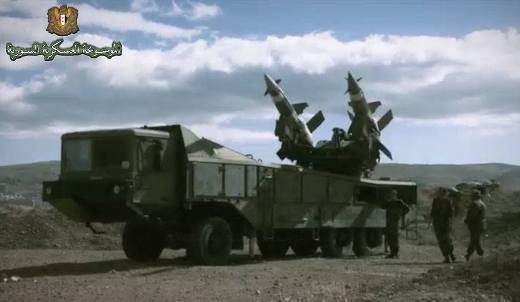
According to the data provided by the Military Balance, as of 2011, the year in Syria had two separate air defense regiments armed with long-range air defense systems C-200BE and 25 brigades armed with stationary air defense systems C-75М / М3 and С-125М / М1А / 2М. More 11 brigades were equipped with self-propelled SAM "Kvadrat" and "Buk-M2E." Three brigades were armed with self-propelled short-range air defense systems "Osa-AKM" and ZRPK "Pantsir-С1". Information on the number of mobile complexes is quite contradictory. Until the middle of the 80-s, more than 50 batteries of the Kvadrat SAM system were supplied from the USSR to Syria.
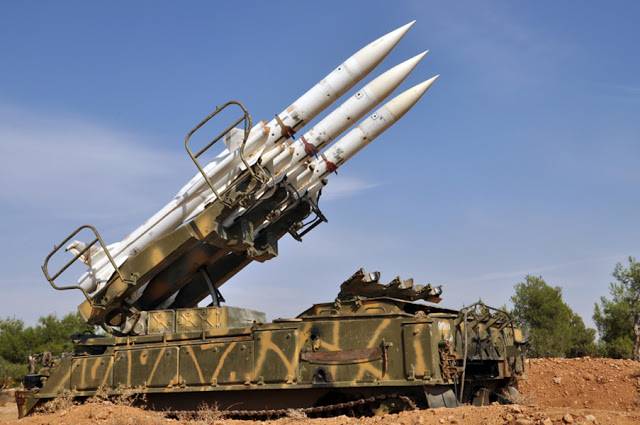
The battery consisted of one self-propelled unit for reconnaissance and guidance, a target designation booth, four self-propelled launchers and auxiliary equipment. At the time when the air defense systems of the Ground Forces of the Soviet Army began to receive the new-generation Buk air defense systems, export squadrons and new anti-aircraft missiles of the 3М9 family continued to be sent to Syria.
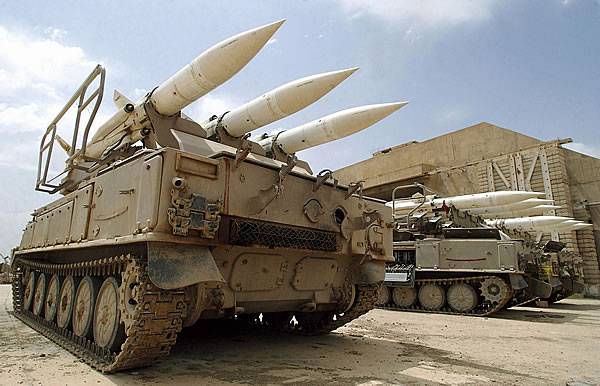
Apparently, some of this technology was lost during the fighting in 70-80-s and written off due to wear. According to information provided by the Stockholm Peace Research Institute (SIPRI), as of 2012, there were 27 Kvadrat anti-aircraft missile batteries in Syria. However, this number may be overestimated, or part of the air defense system with the developed resource was “in storage”. In the 21 century, the outdated Syrian "Squares" were planning to replace the new Buk-M2E complexes.
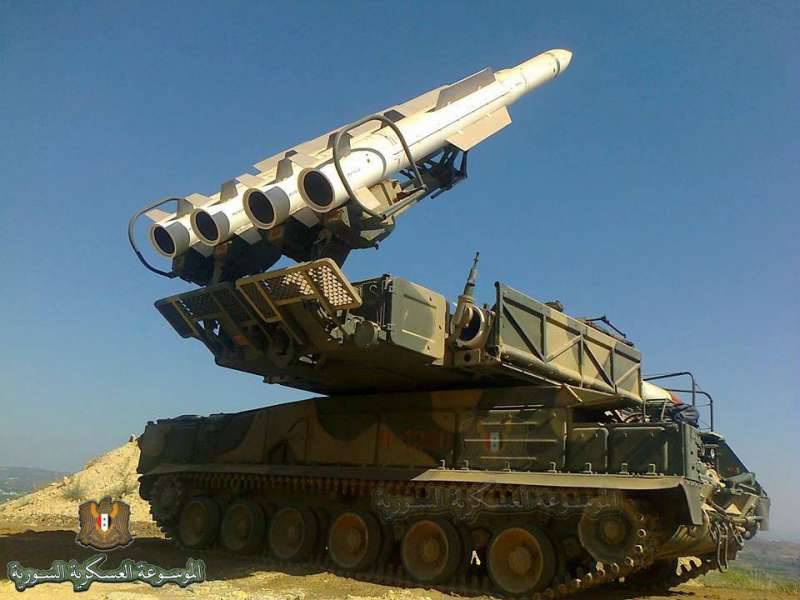
According to data published by SIPRI, according to the contract concluded in 2008, Syria was to receive 8 Buk-M2 batteries and 160 ZNR 9М317 batteries, which were transferred to the Syrian side in the period from 2010 to 2013. All in all, before the outbreak of the civil war, the Syrian armed forces had more than 200 launchers for mobile anti-aircraft missile systems. In addition to the medium-range air defense systems Kvadrat and Buk-М2E, this number included the small-range Osa-AKM and Strela-10 complexes, which, according to various sources, were from 60 to 80 units. In 70, Syria received a number of short-range Strela-1 air defense missile systems, which, along with ZSU-23-4, staffed anti-aircraft divisions of motorized rifle regiments. However, at present, references to these obsolete complexes based on the BRDM-2 are not in reference books and they are not used by the Syrian army.
As part of the 2006 contract, it was planned to supply Pantsir-C1E anti-aircraft missile-gun systems to the SAR. In the period from 2008 to 2011, 36 ZRPK and 700 ZUR 9М311 were sent to CAP.
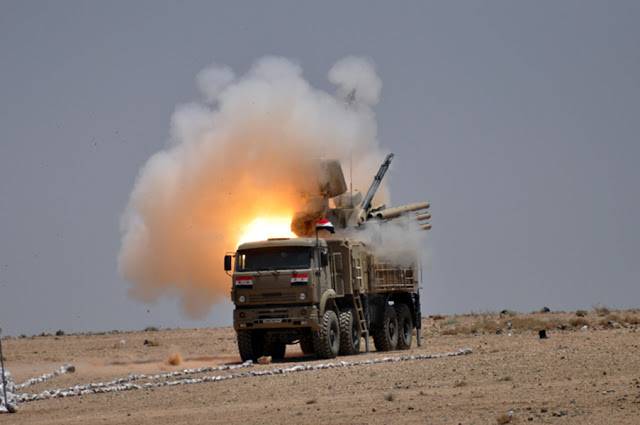
To enhance the combat capabilities of the target air defense system and to replace obsolete anti-aircraft complexes (primarily C-75М / М3), a contract was signed in 2010 for the supply of C-300PMU 2 anti-aircraft missile systems. According to American and Israeli data, Russia should supply four divisions worth $ 400 million and prepare Syrian calculations. However, under pressure from the United States and Israel, the execution of the contract was halted. According to V. Putin’s statement in an interview on 4 in September of 2013, individual components of the AAMS were delivered to the CAP, then the contract was canceled and the advance was returned to the customer.
To protect small units from low-altitude attacks of air attack weapons in the Syrian armed forces, there were about 2011 man-portable Strela-4000M, Strela-2 and Igla anti-aircraft missile systems in the 3. At present, due to the low immunity of the Strela-2 / 3 MANPADS, they no longer meet modern requirements, but due to their large number, they can still pose a threat to low-altitude air targets due to their mass use. The number of heat traps on a combat aircraft or helicopter is limited and at the required time they can simply be spent, and by and large it does not matter how many years the rocket hit the modern aircraft. However, at the moment most of the MANPADS manufactured in the USSR in the 70-80-ies are likely to be inoperable. This is due to the fact that the shelf life of disposable electric batteries, activated before launch, is long overdue. Simultaneously with the deliveries of the Buk-MHNUMXE, Pechora-2М and the Pantsir-C2E anti-aircraft systems in Russia, several hundred modern Igla-S MANPADS were purchased. In addition to the complexes with guided anti-aircraft missiles, the Syrian army had about 1 anti-aircraft guns and artillery systems of the 4000, 14,5, 23, 37 and 57-mm caliber. Their most valuable were ZSU-100-23 “Shilka”, towed by 4-mm doubles ZU-23 and 23-mm guns with C-57 radar guidance.
Control of the air situation over the territory of Syria, the issuance of target designation of the air defense system and the guidance of fighter aircraft to the middle of 2011, carried out more than 30 radar posts, 2 / 3 of which were deployed in the southwestern part of the country and along the coast. These were mainly old Soviet-made radars obtained in 70-80-s: П-15, П-14, П-18, П-19, П-37, PRV-13 and PRV-16.
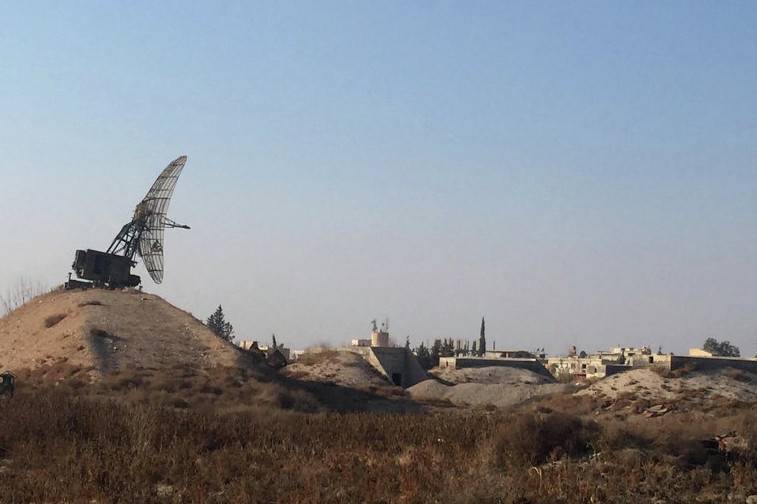
As part of the program to modernize the air defense system before the beginning of the civil war, several modern three-dimensional 36D6 radar were delivered to Syria. Most of the radar stations, as well as anti-aircraft missile systems, were located on the most probable flight routes of the Israeli aviation.
The central control center of the air defense system of the SAR is located in the vicinity of the Saigal air base near Damascus. The Syrian command and control system of air defense forces repeated the Soviet model adopted in the middle of the 80's. The headquarters of the air defense zones (North and South), control centers of anti-aircraft missile formations and units were united into a single network. The exchange of information between headquarters, command posts, anti-aircraft divisions and radio engineering divisions is carried out via VHF and HF radio channels. Before the outbreak of an internal armed conflict, tropospheric, radio-relay and wire communications equipment was widely used.
Despite the unprecedented high density of deployment of anti-aircraft missile systems of various types and a two or three fold overlap of the radar field in the south and east of the country, the combat capabilities of the Syrian air defense forces in the 21 century no longer met modern requirements. The available means of radar reconnaissance are not able to function in the general information space due to the lack of a single automated center for collecting and processing information. The collection and processing of information about the air situation using methods adopted by the USSR Air Defense Forces in 80-s leads to large inaccuracies and delays in the transmission of airborne data. This is due to the hopeless obsolescence of automation systems and control of combat work and low noise immunity of air situation radars and communications equipment. In addition, by the year 2011, many Syrian air defense missile systems and radars had exhausted their service life, and about a third were of the skyrooting due to equipment malfunction. There were major problems with the detection of air targets flying at altitudes of 100 – 200 m. Even in the most important areas, the ability to record low-altitude targets was focal. Without exception, the Syrian air defense radar facilities, with the exception of the Buk-М2E air defense missile system and the Pantsir-C1E air defense missile system, are poorly protected from passive interference and are practically not protected from active interference, and do not have special operating modes when the enemy uses highly accurate weapons. Although the Syrian air defense forces had modern models of equipment and weapons, their share at the time of the beginning of the internal armed conflict was no more than 15%. In general, as early as the end of 90, the ground component of the air defense system of the SAR did not meet modern requirements and could not withstand uninterrupted Israeli and American means of air attack.
As of 2011, the Syrian Air Force had three dozen MiG-25PD interceptors, fifty MiG-23МФ / MLD and about forty MiG-29А. Also, about a hundred hopelessly outdated light MiG-21bis fighters could also attract air targets. The media published information about the modernization of the part of the Syrian MiG-29A. However, a number of reputable foreign sources believe that the modernization disguised deliveries of MiG-29M, ordered by Damascus about 15 years ago.
During the years of civil war, Syrian fighter aircraft suffered heavy losses. The fleet of MiG-21 and MiG-23 fighters, which were actively used to launch bombings and assault on militants, was reduced by about two times. The reasons for this were both combat damage, accidents and disasters associated with wear and equipment failures due to poor maintenance.
The MiG-25PD interceptors, due to the development of the resource and unsuitability for use as bombers in the initial phase of the civil war, were mothballed in fortified hangars at air bases. According to the published information, the main part of the interceptors suitable for further use is concentrated on the base of the Et-Tiyas air base, located in 4 km to the south-west from the eponymous settlement of Tiyas of the province of Homs.
Later it was reported that some of the interceptors were returned to service. In the spring of 2018, photos of the Syrian MiG-25PD appeared on the network. It is reported that these vehicles allegedly participated in repelling an Israeli air raid that struck at a supposed Iranian command post. drones.
What kind of combat success was achieved by fighter-interceptors, the newest of which was built in the 1985 year, is unknown. But the MiG-25 at record height and speed of flight was always very expensive and difficult to operate. In addition, it is unclear how in the conditions of the most powerful radio-electronic interference and air supremacy of Israeli aviation, fighters with outdated airborne radar and communications equipment were aimed at the target. It can be assumed that several reanimated MiG-25 could be used for patrol and demonstration flights or conducted reconnaissance.
Judging by the satellite images of the Syrian air bases, where the MiG-25 was previously based, the bulk of these aircraft is a “real estate”, without any chance of returning to service. The once formidable three-wing interceptors are currently mostly abandoned on the outskirts of airfields outside the runway, or for several years they stand motionless next to arched concrete shelters. Only a few specimens were spotted near the hangars, where the Su-24M, Su-22M and L-39 are being serviced, which are still actively involved in delivering bombings to the militants.
Among the fighters of the SAR Air Force, the MiG-29 is the most valuable. These machines were also used to bomb the positions of Islamists, but very limited. Modern fighters capable of carrying air combat missiles P-27, in Syria, protect and try to prevent their losses. Although the MiG-29M is theoretically capable of withstanding the Israeli F-16I Sufa, the Israelis are outnumbered and better prepared. In addition, outdated ground-based radars are used to target fighters of the Syrian Air Force, and the Israeli Air Force has modern DRLO aircraft. At the beginning of the 21 century, the SAR leadership planned to upgrade its air force by purchasing heavy Su-30 family fighters from Russia. But due to the difficult financial situation and the internal armed conflict that began in Syria, these plans did not materialize.
The civil war that began in 2011 had disastrous consequences for the Syrian air defense system. As early as the summer of 2015, no more than 30% of deployed C-75 and C-125 ADMS were deployed in stationary positions. Also, the number of active radar posts has decreased by approximately two times.
The main cause of losses was the hostilities that unfolded between the armed opposition and government forces. Several air defense missile systems and radar stations, which were in the midst of ground battles, were destroyed as a result of artillery and mortar attacks.
Some part of the air defense equipment and weapons was in the hands of the militants. Fortunately, among the bearded Islamists, there were no specialists able to exploit C-75 and C-125 complexes that are rather difficult to maintain.
Early modification C-125 air defense system captured by Jaish al-Islam militants in the Eastern Guta area
After the beginning of the civil war, the system of repair and maintenance of air defense equipment created with the help of the USSR fell into disrepair. Prior to 2011, specialized maintenance bases and repair and rehabilitation enterprises, along with centers for training and calculating, made it possible, despite their advanced age, to maintain a sufficiently high degree of combat readiness of the existing anti-aircraft missile systems, radars, control equipment and data transmission equipment. On this infrastructure, technical measures of “minor modernization” and reconditioning of the hardware of the complexes were regularly carried out, anti-aircraft missiles were serviced in specially created arsenals.
Currently, the eight most recent S-75М3 air defense missile systems built in the middle of the 80-i are in combat duty in the western part of the country and in the vicinity of the ports of Laktakia and Tartus and under Homs. Two C-75М3 complexes at the beginning of 2017 were deployed southwest of Damascus.
Satellite image of Google Earth: position of С-75М3 ЗРК to the south-west of Damascus, the picture was taken 17 January 2017 of the year
In connection with the exhaustion of the technical resource and the inability to maintain in working condition in 2012-2015, the medium-range C-75М air defense systems with the B-755 SAM and low-altitude C-125 with co-ordinated twin launchers were decommissioned. Since it was difficult to evacuate outdated equipment and old anti-aircraft missiles that turned out to be in a combat zone, they were often “disposed of” by exploding directly in the firing position, which made it possible to avoid falling into the hands of militants. As for the complexes, which had further prospects for use, they were taken to storage bases and airfields under the control of the government army. Currently, approximately 10 battalions of low-altitude air defense missile systems C-125М1 and Pechora-2М are deployed in the territory controlled by government Syrian forces.
The same situation exists with the Strela-10, Osa-AKM and Kvadrat military complexes. Until the middle of 2011, the Syrian mobile military air defense systems were engaged in combat duty in the vicinity of military airfields and large military bases. However, judging by satellite images, already at the beginning of 2012, the mobile air defense systems left the places of their previous deployment and moved to shelters in territories free from Islamists. However, in October 2012, at least three Osa-AKM air defense systems with 9М33 missiles became trophies of militants of the Jaish al-Islam group.
Since July, 2013, captured by Islamists, the Osa-AKM SAM system has been used in combat against government aviation. It is reported that the militants managed to shoot down two transport helicopters Mi-8 and damage the combat Mi-25. According to information released by 15 on October 2015 of the year, Major General Igor Konashenkov, a representative of the Russian Ministry of Defense, hit the KAB-500 adjustable bombs, dropped from the Su-34 front-line bomber, destroyed the masked position of the Osa anti-aircraft missile system that had been captured by the militants who had previously been captured by the militants. the armed forces. The concrete shelter in which the air defense system was located was completely destroyed. Apparently, by the end of 2016, all the “Wasps” captured by the militants were destroyed or disabled.
As for the short-range complexes “Strela-10” and “Osa-AKM”, which remained at the disposal of the Syrian army, they have a rather high modernization potential and, after major overhaul and improvement of the electronic filling, they can be used for another 10-15 years. Variants of budget upgrading with simultaneous increase in combat performance are offered by Russian and Belarusian enterprises. Whether they will be implemented in the first place depends on whether there are financial resources for this in Syria.
Unlike the Strela-10 and Osa-AKM systems, the Kvadrat Syrian complexes are in the final stages of their life cycle. Already in the middle of the 80s, the Israelis had learned how to effectively effectively interfere with the radar equipment of a self-propelled reconnaissance and guidance unit. Unlike the Buk air defense missile system, the Kvadrat self-propelled launchers completely depend on the efficiency of the reconnaissance and guidance station and cannot direct anti-aircraft missiles on their own. In addition, the supply of anti-aircraft missiles 3М9 stopped in the middle of 80-x. Currently, stocks of air-conditioned missiles are almost exhausted. In the "Cube" complexes and its "Kvadrat" export version, rockets with a semi-active radar guidance system with a solid-state solid-fuel engine are used. The warranty storage line for the 3М9 SAMs is 10 years, after which the rocket must be serviced with the replacement of composite fuel and the testing of electronic components. The Kvadrat complexes themselves, created using the technologies of the end of 60-s, are built on the element base with a high percentage of vacuum tubes. Based on this, it can be assumed with a high degree of certainty that the Syrian "Squares" will soon be decommissioned and decommissioned. Syria has remained one of the few countries where mobile military air defense systems of the Cube - Kvadrat family are still in service. Most of the states that traditionally use Soviet and Russian air defense systems have switched to modern versions of the Buk air defense system.
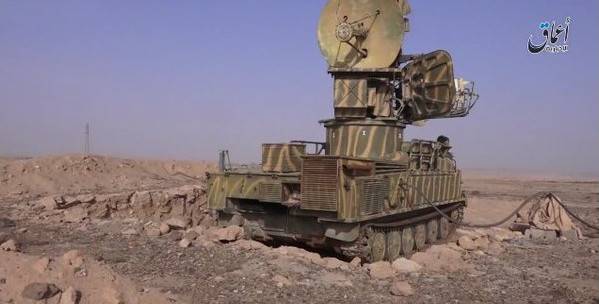
At the beginning of 2016, images captured by Islamists in the vicinity of Dair-ez-Zor SURN 1С91 and SPU 2П25 with ZUR 3М9 were published online. In this connection, fears were expressed that the Kvadrat that fell into the hands of terrorists could be a danger to military aircraft of the Russian Federation Air Force, operating in Syria. Subsequently, the Russian military aviation actively worked in this area and, most likely, elements of the captured air defense system were destroyed or disabled. In any case, more photos of the captured anti-aircraft complex was not published.
Much of the anti-aircraft artillery, available in the Syrian army, is used for firing at ground targets. First of all, this refers to 23-mm paired ZU-23 installations, which are mounted on different chassis and are quite an effective means of fire support.
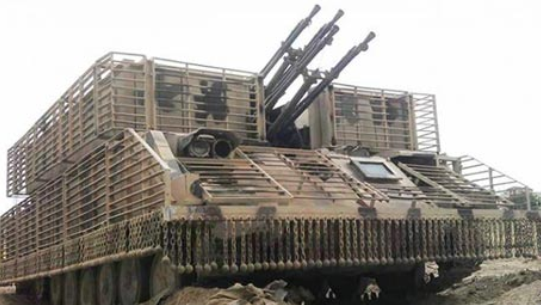
During the fighting to clear the settlements from the militants, the ZSU-23-4 Shilka recommended itself well. To reduce losses from cumulative ammunition, home-made lattice screens were installed on a part of the combat vehicles.
Speaking about the current state of the air defense system of the SAR, it is impossible to ignore the most long-range Syrian air defense missile systems, the C-200BE, which cover about 70% of the country's territory and border areas of a number of neighboring countries. However, the mass and dimensions of the C-200BE air defense missile system, as well as the attached radar equipment: P-14, P-80 and PRV-13 are such that their placement requires well-prepared engineering sites. And the process of deploying C-200 from the march takes a day. In addition, launchers with missiles weighing more than 7000 kg and 11 m long are almost impossible to disguise and hide from satellite reconnaissance assets.
With a record range and height of air targets, the export Vega is essentially stationary and cannot fire at targets flying at altitudes less than 300 m, which makes the “two hundred” practically useless against modern cruise missiles at low altitudes. In addition, the complex, originally designed to deal with strategic bombers, DRLO aircraft, high-altitude long-range reconnaissance aircraft and jammers, has a low probability of hitting a target when firing tactical and carrier-based aircraft that are maneuvering. Despite the high cost and complexity of servicing, the Syrian “dvuhsotki” remain “long arm”, which potential aggressors have to reckon with. The very presence of an anti-aircraft complex in Syria with a long-range 240 km defeat and capable of destroying targets at altitudes up to 40 km forces potential aggressors to take this into account.
Syrian C-200BE regularly participate in the reflection of Israeli air raids. For example, in March 2017, four Israeli Air Force aircraft that had invaded Syrian airspace were attacked with 5B28E anti-aircraft missiles. Missile debris fell on Jordan’s territory. The Syrians reported that, allegedly, one aircraft was shot down, the Israelis - that "... the safety of Israeli citizens or Air Force planes was not under threat."
October 16 2017 of the C-200BE air defense system in response to the destruction of the Osa-AKM air defense missile system on the Lebanese-Syrian border fired an Israeli aircraft in Lebanese airspace. According to the Syrian command, the plane was shot down. According to Israeli data, the response launch of anti-radar missiles disabled radar target illumination.
10 February 2018, the F-16I of the Israeli Air Force was hit by an anti-aircraft missile. The plane fell to the north of the Jewish state. The pilots ejected, the state of one of them is estimated as serious. According to representatives of the Israel Defense Forces, the aircraft was fired from the C-200VE and Buk-M2E air defense systems.
14 April 2018, the Syrian C-200BE, were used to counter the missile attack of the United States, Britain and France in the 2018 year. According to American data, eight missiles were fired, but they did not hit targets. That, however, is not surprising, as already mentioned, the ability of the C-200 air defense system to combat low-altitude targets is very limited.
10 May 2018, C-200BE, along with other air defense systems, were used to counter the attacks of the Israeli Air Force. According to the statements made by the Israeli representatives, one SAM system was destroyed by return fire. In the course of the air strikes, Israeli Air Force fighter-bombers used the Poi-Ai KR.
Until recently, eight C-200BE divisions were deployed in positions in Syria. According to information published in foreign media, during the last Israeli and American air strikes, part of the complexes was disabled. The network published photos of the destroyed radar illuminating the target 5H62 of the airborne, deployed in Er-Romandane, 10 km east of Damascus. Judging by the nature of the damage, the ROC received a direct hit by a rocket, and then caught fire.
The target illumination radar is the most vulnerable element of the C-200 ADMS. In addition, the combat capability of the complex is sharply reduced in the case of the suppression or destruction of radar tools that issue target designation — the P-14 (P-80) standby radar and the PRV-13 radio altimeter.
A number of foreign and domestic experts indicate that even under the condition that the hardware of the C-200BE systems is operational, over the next few years, stocks of anti-aircraft missiles will be spent. According to some reports, on one launcher in Syria, there are 2-3 missiles. The launch of the 5B28 missile defense system was completed at the end of the 80-x, and Russia is not able to deliver workable missiles. In our country, the latest C-200 systems have been removed from combat duty and disposed of over 10 years ago. It is possible that Iran will be able to help with the preservation of the C-200BE in the combat structure of the Syrian air defense. As is known, the Islamic Republic also operates complexes of this type, and according to Iranian data, they have launched their own production of anti-aircraft missiles for them.
In general, the capabilities of the Syrian air defense system to protect its airspace are very limited. Although the Syrian leadership is making significant efforts to maintain control over the airspace of the country, in a state torn apart by internal conflict, the centralized command and control system of the air defense forces has been destroyed, many regional command posts, radar stations and communications centers have been damaged, and radio relay and cable lines have been damaged. Recent US and Israeli airstrikes have shown that outdated Syrian air defense systems are highly vulnerable to the effects of modern electronic jammers. To date, the Syrian air defense has a pronounced focal character. At times, the number of stationary positions of the air defense system and radar stations in the south and south-east of the country in the areas bordering Jordan, Israel and Lebanon has decreased. There are practically no means of air defense and air control in the north and west of Syria. The Air Force of unfriendly states: the USA, Israel and Turkey actively use these bresses.
The hopes of the Russian “patriotic” that the deployment of our fighters and various anti-aircraft systems at Khmeimim airbase will provide an anti-aircraft “umbrella” over the entire territory of the SAR have proved to be untenable. Russian air defenses in Syria ensure the security of the base itself and do not participate in repelling Israeli and American air strikes against Syrian targets. Thus, the air defense system of the SAR is forced to independently counteract an adversary with significant numerical and technological superiority. Recently, under various pretexts, the United States and Israel have been systematically destroying the Syrian military and industrial infrastructure and the direct air defense weapons. For example, on May 10 of Israel, 2018, during attacks on Iranian forces in Syria, attacked the C-75М3, С-200ВЭ, Buk-М2Э and Pantsir-C1E air defense missile systems. After that, the press service of the Israel Defense Forces published a video of the destruction of a Russian-made anti-aircraft missile-cannon complex with a Spike NLOS rocket.
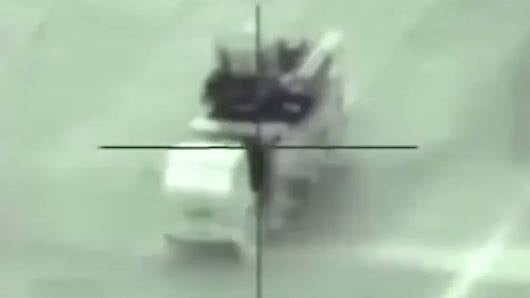
Shortly before 14 on April 2018, under the pretext of retaliation for Syrian government forces using chemical weapons in the Duma and Eastern Ghouta, the United States, France and the United Kingdom launched a series of rocket attacks on government-controlled objects. In operation, cruise missiles of sea and air-based were used: BGM-109 Tomahawk, Storm Shadow, SCALP, AGM-158 JASSM.
According to the Russian MoD, 103 cruise missiles were detected in Syrian airspace. Of these, an 71 target was hit by fire from an air defense system. The total expenditure was 112 anti-aircraft missiles: C-200BE - 8; С-125М1 / Pechora-2М - 13; Buk-M2E - 29; "Square" - 21; Osa-AKM - 11; Strela-10 - 5; "Pantsir-С1E" - 25.
Thus, it turns out that the Syrian anti-aircraft complexes managed to knock down approximately 70% of cruise missiles, with an average expenditure of 1,6 missiles per target. That, given the current state of the air defense system of Syria, can be considered an outstanding result. However, the main task of the air defense forces is not the defeat of air targets, but the protection of covered objects. Apparently, the Syrian calculations failed to fulfill this task. According to the statements of the American, British and French military, all the objects selected as targets were destroyed, as satellite images of the objects before and after the strikes, as well as reports from the sites, clearly demonstrate. Concerning the effectiveness of Syria’s air defense against repelling missile strikes, there is alternative information. So, according to American data, the Syrians failed to shoot down a single aircraft that participated in the operation, and not one of the 105 launched cruise missiles. The official representative of the US Department of Defense, denying that the Syrians intercepted at least some of the number of missiles, confirmed that during the launching of the missiles, the Russian air defense systems were “active”, but did not attempt to intercept. At the same time in the air was a Russian aircraft AEW X-NUMXM. Apparently, the Russian military shared information about the air situation, provided target designation to the Syrian air defense missile system and some of the cruise missiles were actually intercepted. However, the statement that 50% of air targets that participated in the rocket attack was shot down is not credible.
After aviation and missile strikes began to be inflicted on the objects of government forces with enviable regularity, the question arose of improving the Syrian air defense system and Russian officials began talking about the possibility of supplying C-300P or even C-400 anti-aircraft systems. This in turn caused a flurry of publications in Russian print and online publications, the authors of which, apart from the existing realities, often quite loosely consider various versions of events and are confused in modifications of anti-aircraft missile systems.
On the "Military Review" the author, who regularly writes about the prospects for the deployment of C-300 AAMS in Syria, is Yevgeny Damantsev. A typical example of his work is the publication When will the Syrian C-300 wake up? As the Russian General Staff leads Israel and the USA around the finger. In it, Eugene hints at the possibility that the long-range Russian missiles are already at the disposal of the Syrians, and that the Israeli Air Force during the next raid could expect an unpleasant surprise. Dear author assumes that C-300P divisions can be secretly delivered to Syria and located on the eastern slopes of the Lubnan el-Sharqiya mountain range. At the same time, it is not clear which C-300P version is being discussed, since the text of the publication constantly mentions various options: C-300PS, C-300PMU1 and C-300PMU2.
To make it clear to readers, the difference between the various modifications of C-300P and the probability of their occurrence in the CAP, we consider them in the order of appearance. The adoption of the C-300PS into service took place in the distant 1982 year, and mass production was carried out before the start of the 90's. The system, which replaced the C-300PT with towed launchers, used the same 5В55Р missiles with a semi-active seeker and a maximum range of air targets 75-90 km. The main difference between C-300PS and C-300PT was the placement of launchers on the MAZ-543 self-propelled chassis. Due to this, it was possible to achieve a record short deployment time - 5 minutes.
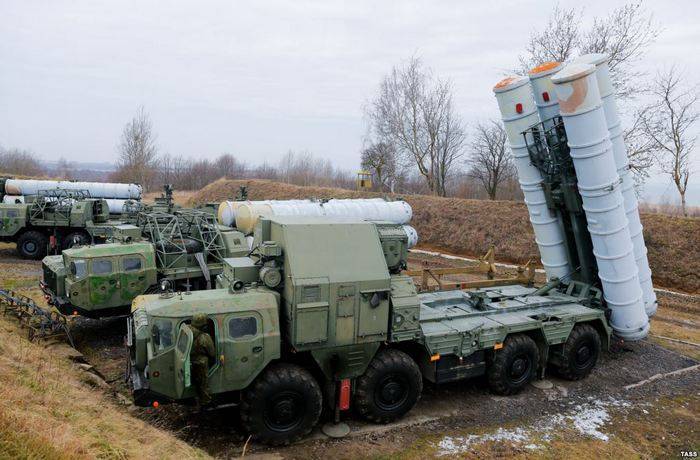
Prior to the start of mass deliveries of C-400 ZRSs, it was C-300PS, together with relatively small C-300PMs, which formed the basis of the Russian anti-aircraft missile forces. The C-300PS export version, known as the C-300PMU, from the second half of the 80-x was supplied to the allies under the Warsaw Pact - Bulgaria and Czechoslovakia, and at the beginning of the 90-x in the PRC. In addition to some changes in the composition of electronic equipment, relating mainly to the system of state recognition, the export version is also different in that the launchers are offered only in the version transported on semi-trailers.
The C-300PS anti-aircraft missile system has been on combat duty for a long time and has proven itself well in the military. However, at the moment, the C-300PS is considered obsolete and should be replaced by a new generation of anti-aircraft systems. The age of most of this type of SRS has passed or is nearing 30 years. At the same time, the assigned resource of the hardware and mechanisms of the C-300PS is 25 years, and the warranty period for the storage of the freshest 5В55РМ anti-aircraft missiles expired in the 2013 year. The C-300PS operated in the VKS RF are mostly worn out and are in the final stages of the life cycle. In 2016, the equipment of several Russian divisions was donated to the CSTO allies - Belarus and Kazakhstan. At the same time, military observers noted that all transferred C-300PS air defense systems have a small stock of missiles and need to be repaired. It is clear that in this situation, the supply of C-300PS to the Syrian armed forces cannot be discussed.
In the 1989, the tests of the C-300PM ATP were completed. Thanks to the introduction of the 48H6 rocket and the increase in power of the multi-function radar, the target destruction range increased to 150 km. However, the collapse of the Soviet Union had the most negative impact on the volume of serial construction of the new anti-aircraft system. Although the C-300PM was officially put into service in 1993, in the conditions of massive reduction and reform of the air defense forces, production for the needs of its own armed forces lasted only a few years. By 2014, all the existing C-300PM AESs have undergone refurbishment and modernization, after which they received the designation C-300PM1. The export version of C-300PM was offered to foreign customers under the designation C-300PMU1. The buyers of this anti-aircraft system were Greece, China and Vietnam.
In the course of modernization, part of the anti-aircraft systems was transferred to towed launchers, which is not particularly important when carrying combat duty at stationary positions in peacetime, but is a step back in terms of mobility in case of need to hastily change the firing position. Since 2013, work is underway to fine-tune previously issued AAMS to the C-300PM2 “Favorite” level. At the same time, due to the introduction of the new 48H6E2 SAM in ammunition, the refinement of radar tools and guidance equipment, the launch range was extended to 200 km and the possibilities of hitting ballistic targets were expanded. The first regimental set of C-300PM2 air defense systems began combat duty in the Moscow region in December 2015. The export version of the C-300PM2 AAMS is known as C-300PMU2. This modification was delivered to China, Azerbaijan and Iran. The main external feature, which makes it easy to distinguish the C-300PMU2 from other modifications, is a towed launcher with a Russian-made BAZ-6402 tractor, which is also used for transporting the C-400 launcher.
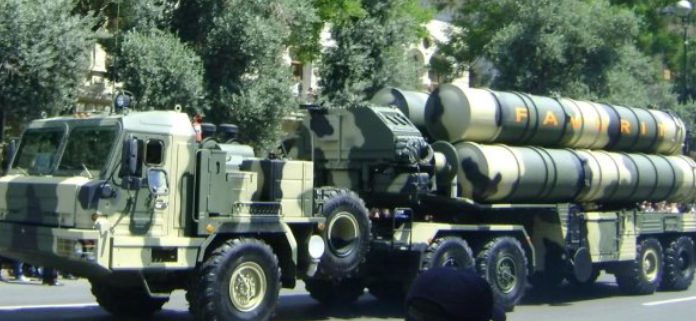
Based on past experience, it is known that the process of fulfilling a contract for the construction of anti-aircraft systems of the C-300P family and training calculations takes 2-3 of the year. At the same time, the commercial value of the C-300PMU2 regimental kit (2 srdn) is estimated at no less than $ 300 million. Considering the fact that there is no information on concluding a contract and making new C-300PMU2 radars, the possibility of delivering this export modification to Syria should be considered as an unwarranted fantasy. In addition, several years ago, representatives of Concern EKR Almaz-Antey, OJSC, stated that the serial construction of the C-300П off-road missile system will be completed and all production facilities will be used for the production of C-400. An attentive reader may argue that Syria can be delivered with the S-300PM1 / PM2 air defense systems available in the Russian armed forces. This is certainly possible, but it will certainly be an irrational step, since it is impossible to quickly train the Syrian calculations and bear combat duty on them to the Russian military, which in turn is fraught with combat losses. It is naive to believe that the Israelis and the Americans will refrain from destroying the anti-aircraft systems that are located outside the Russian military base and threaten their combat aircraft. Yes, and the anti-aircraft cover of the most important strategic facilities on the territory of Russia is very far from perfect, and the donation of several modern and very expensive anti-aircraft missile systems to another country clearly will not benefit our defense capability.
Separately, I want to say about the probability of survival of C-300P in Syria. Statements about the possibility of placing an anti-aircraft division on the mountain slopes of those who are even slightly familiar with the requirements for the engineering arrangement of firing positions, does not cause anything but a smile. In the past, the Syrians had already practiced the organization of anti-aircraft missile ambushes in mountainous areas, where Israeli aircraft tried to hide behind the mountain ranges, being out of sight of ground-based radars. But the preparation of bases and the rise of the air defense system in the mountains were fraught with great difficulties. At the same time, Kvadrat and Osa-AKM military complexes were used, which are much less bulky and heavy than the C-300P. I would like to remind you that the 5P85С self-propelled launcher on the MAZ-543M chassis with four anti-aircraft missiles weighs more than 42 tons, with a length of 13 and a width of 3,8 meter and its cross-country maneuverability is very limited. Often, people far from the armed forces forget that the anti-aircraft division, in addition to the launchers, includes about a dozen multi-ton machines for various purposes: command and control radars, detection and guidance radars, antenna posts with tractors, transport-charging machines and mobile diesel generators . It is difficult to imagine how all this very vulnerable and cumbersome economy will be able to move freely around a country in the grip of a civil war, and how the presence of several antiaircraft battalions with long-range missiles in modern conditions can be hidden from intelligence, radio and space intelligence.
In the domestic media for the C-300P and C-400 AIRCRAPS a halo of “super-weapon” has been created, capable of equally successfully combating both aerodynamic and ballistic targets at long-range distances. At the same time, it is somehow not customary to say that the anti-aircraft systems that are certainly outstanding in their characteristics have some drawbacks. In the case of participation in the repulse of massed raids of enemy air attack weapons, the weak point of the long-range anti-aircraft systems is a long reload time. With a high fire performance of ZRS-300P and C-400 in a real combat situation, a situation may arise when all the ammunition in the launchers will be used up. Even if there are spare anti-aircraft missiles and transport-charging vehicles at the launch site, a lot of time will be needed to replenish the ammunition. Therefore, it is very important that heavy anti-aircraft systems are covered with short-range complexes, which is not always possible to put into practice.
It is no secret that the Americans and Israelis in the course of training their pilots pay special attention to training in the fight against the Russian C-300P and C-400. It is reliably known that the C-300P radar equipment is available at American test sites, and in the past, the Israeli Air Force, together with the US Air Force, worked on the destruction of Russian-made long-range air defense systems. In this case, C-300PMU / PMU1, available in Slovakia, Bulgaria and Greece, were used as a conditional enemy.
Currently, the possibility of providing C-300P to the Syrian armed forces is an argument in dialogue with our “partners” - the United States and Israel. However, this is unlikely to be implemented in practice. This step is capable of causing a further escalation of tension, and from a military point of view it is devoid of much sense. The vulnerability of costly and cumbersome anti-aircraft systems from sabotage actions in a country where government forces have not yet regained control over the entire territory is very high. And without proper support from the radio engineering divisions, the effectiveness of the C-300P will be significantly reduced. In practical terms, a more rational step, capable of really strengthening the Syrian air defense system, is the delivery of the latest export versions of the Buk and Tor systems. Unlike the C-300P air defense missile systems, the combat vehicles of these complexes, even if they do not have such a range of destruction, are capable of conducting combat operations autonomously, possess better mobility and the ability to effectively combat low-altitude, highly maneuverable targets. However, the solvency of Syria in the present conditions causes great doubts, and if the decision on the provision of modern anti-aircraft weapons will still be made, then the financial burden will ultimately fall on the Russian taxpayer.
Based on:
https://missilethreat.csis.org/systems/s-300p.html
http://geimint.blogspot.ru/2007/09/syrian-sam-network.html
https://www.bbc.com/russian/international/2013/09/130913_israel_yom_kippur_war_archives
https://southfront.org/syrian-air-defense-capabilities-pechora-2m-systems-photo/
https://www.almasdarnews.com/article/syrian-air-defense-confirms-downed-israeli-warplanes/
http://spioenkop.blogspot.ru/2016/08/photo-report-syrian-arab-air-defence.html
http://kremlin.ru/events/president/news/19143
https://petrimazepa.com/peekaboo
https://www.discred.ru/news/rossijskaja_aviacija_unichtozhila_v_sirii_zakhvachennyj_boevikami_zenitno_raketnyj_kompleks/2015-10-15-16291
https://www.discred.ru/2018/05/11/kto-vinovat-v-unichtozhenii-buka-i-pantsirya-v-sirii/
https://commentarii.ru/blog/43999997192/kadry-unichtozhennyh-rls-izrail-vyvel-iz-stroya-dva-diviziona-s-200
https://sputniknews.com/world/201509111026884045-russia-syria-air-defense-forces-supplies/
http://www.washingtoninstitute.org/policy-analysis/view/syrian-air-defense-capabilities-and-the-threat-to-potential-u.s.-air-operat
https://en.zamanalwsl.net/news/article/34248/
http://www.ausairpower.net/APA-Engagement-Fire-Control.html
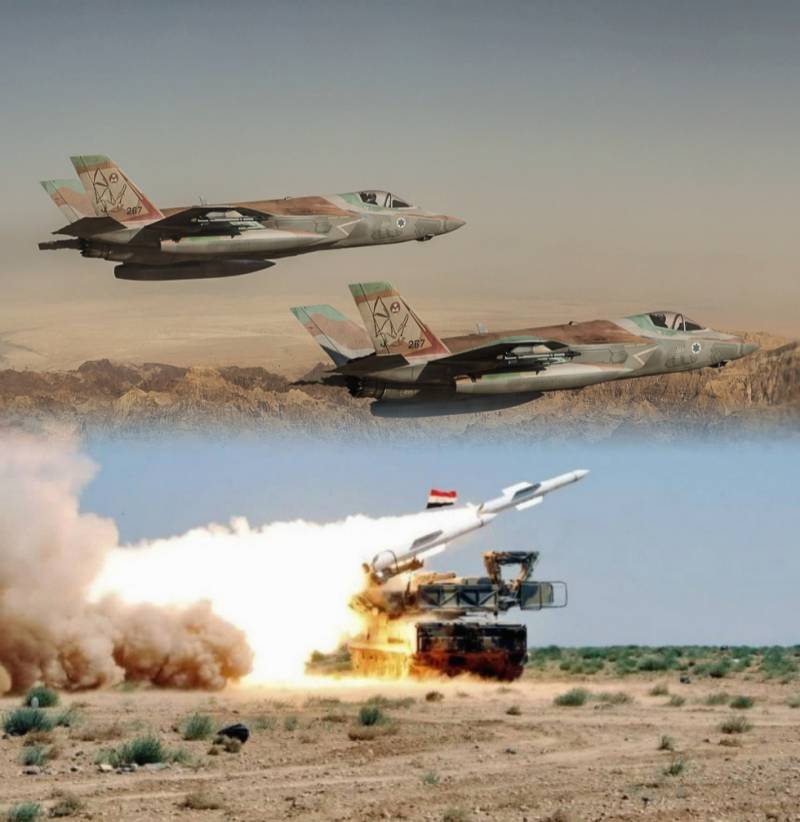
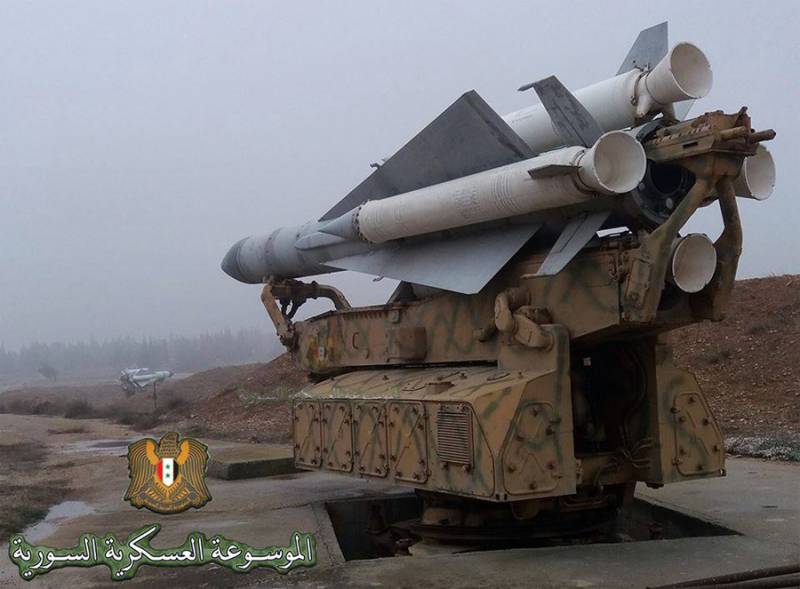
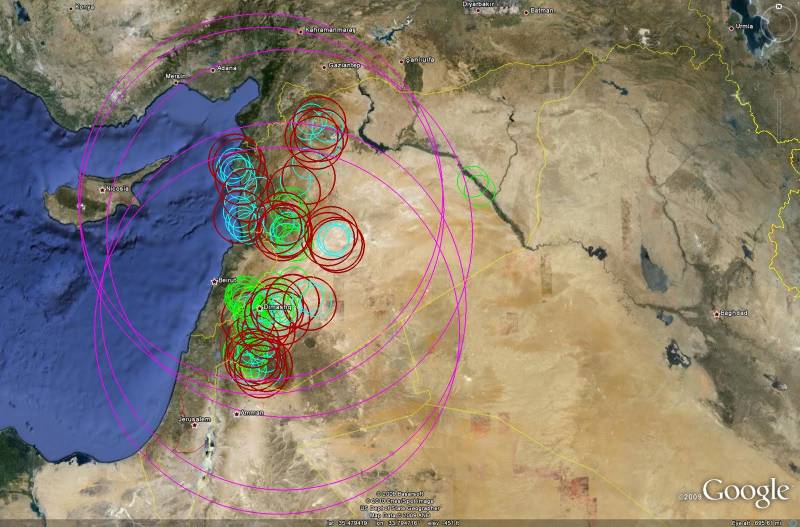
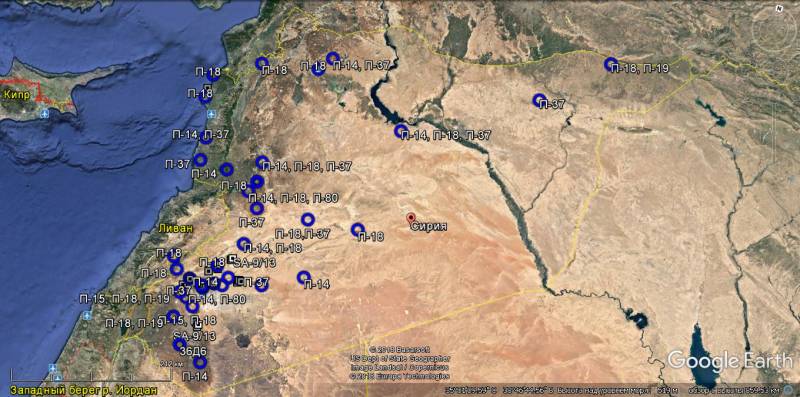
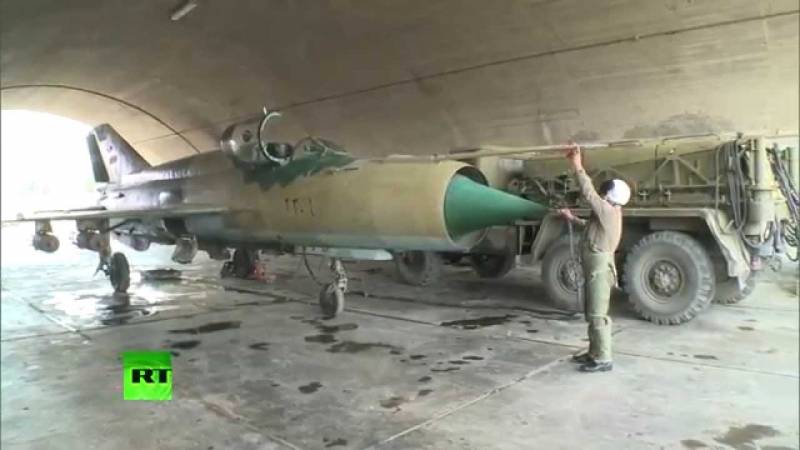
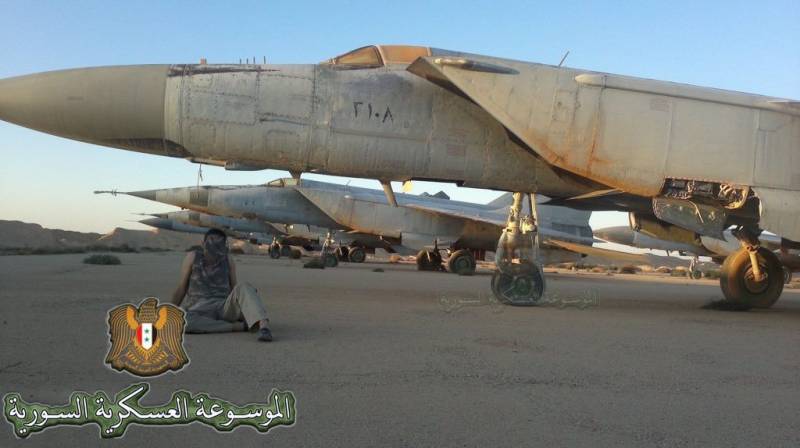
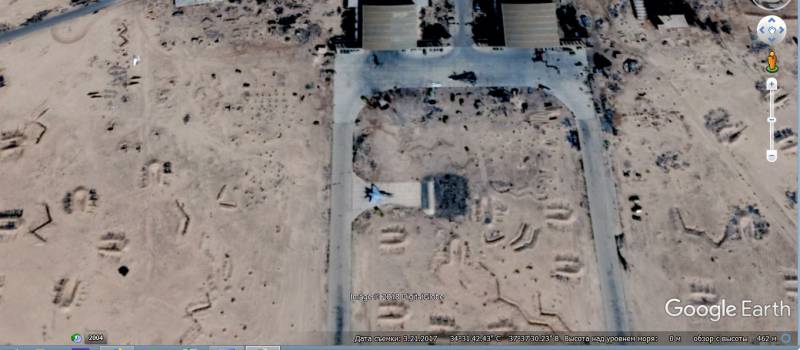
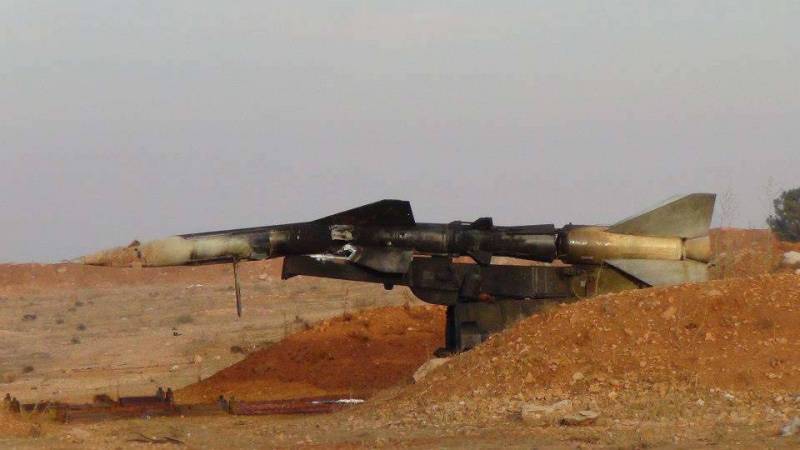
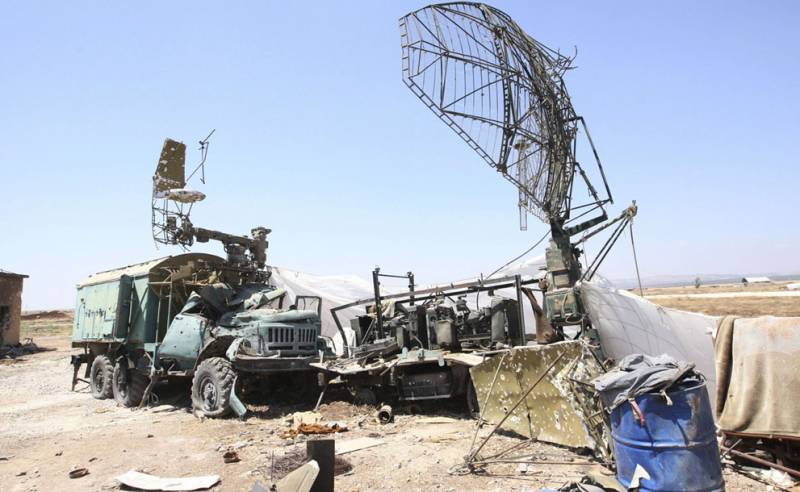
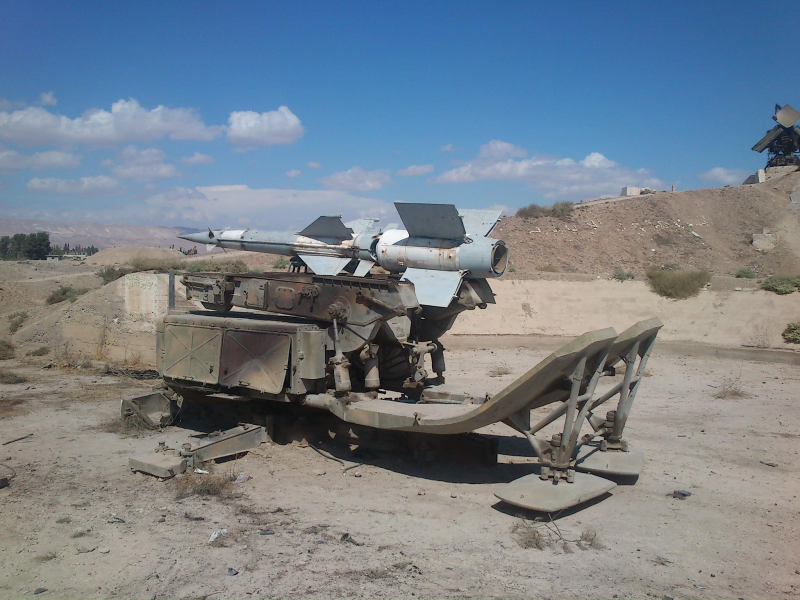
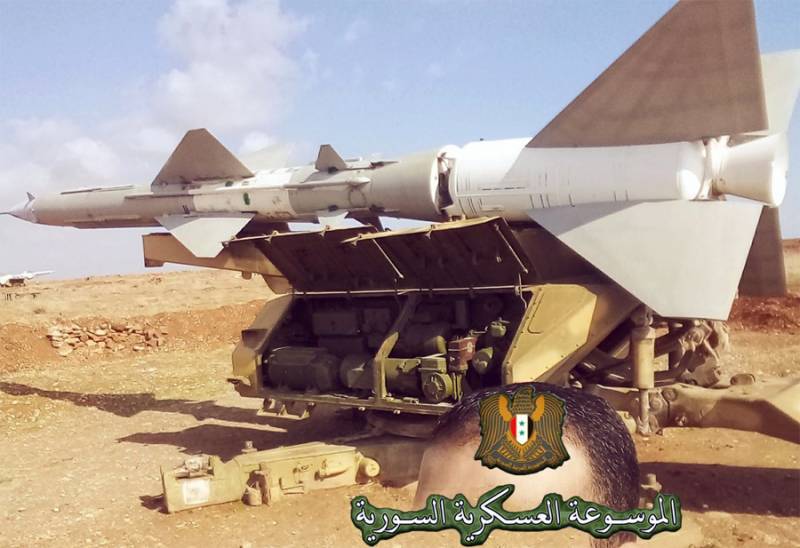
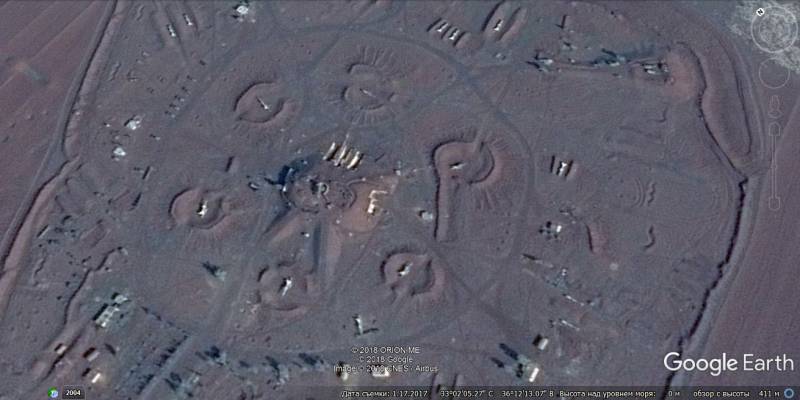
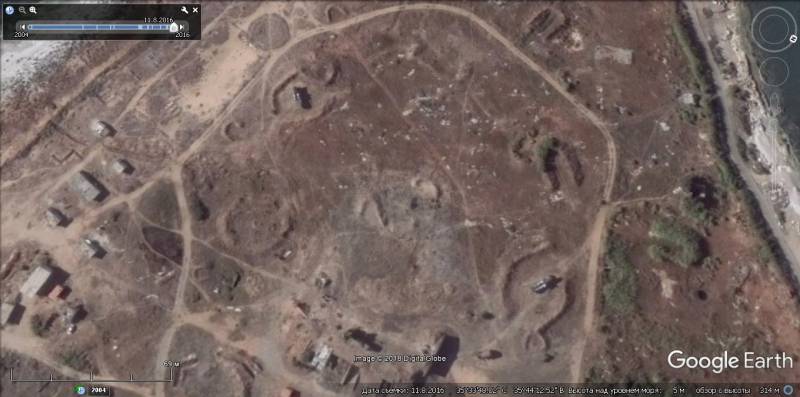
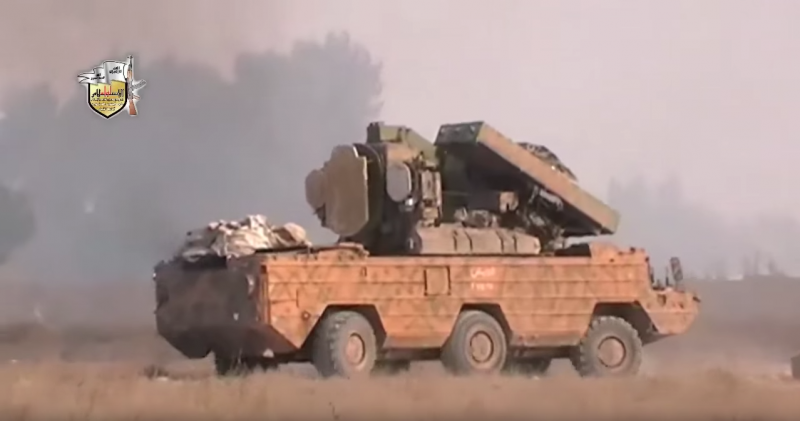
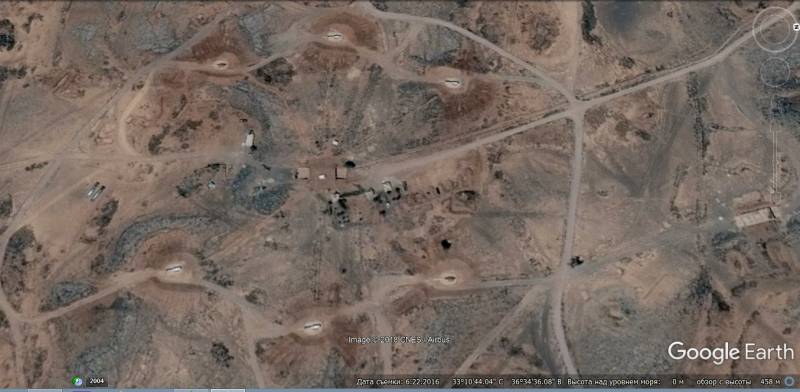
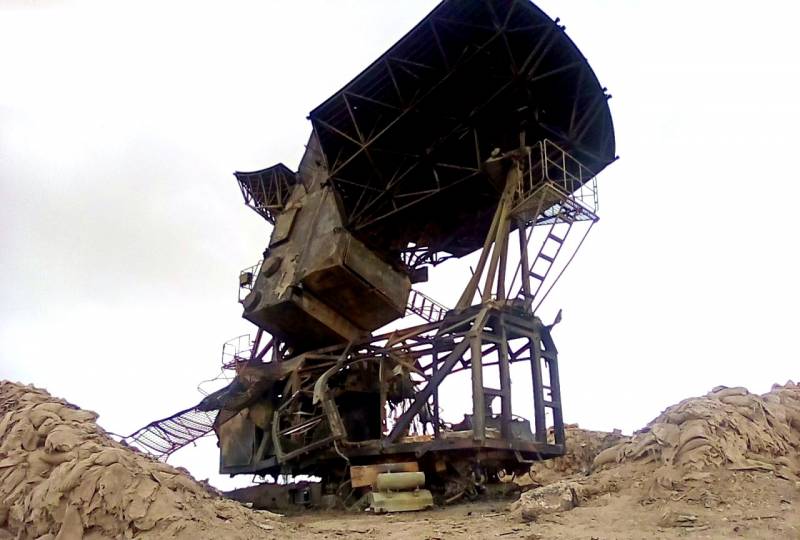
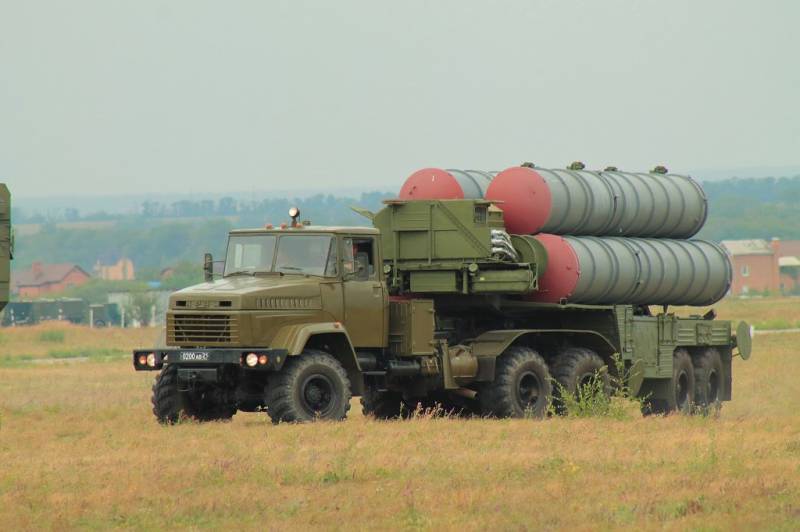
Information